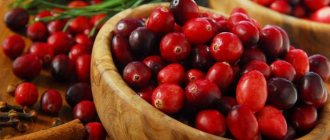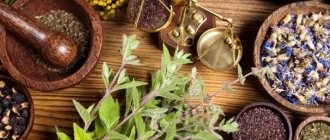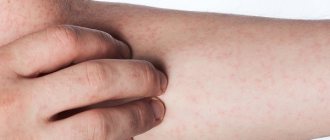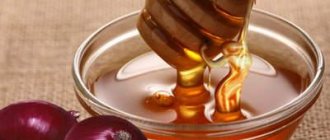What is fatty liver hepatosis
Steatosis, fatty infiltration or non-alcoholic fatty liver disease are all names for the same disease, which is characterized by an increase in the percentage of fat in the liver cells. We can talk about hepatosis when more than 5% of the organ’s weight is altered parenchyma with excess cholesterol and lipoproteins, and if it takes up more than 10% by weight, then half of the liver cells are already occupied by fat. The key problem of the disease is the absence of symptoms at an early stage; primary manifestations can easily be attributed to any problems with the gastrointestinal tract:
- morning sickness;
- discomfort in the area of the right hypochondrium (tugging sensation, not always pain);
- digestive problems (dyspepsia, stool disorders);
- slight increases in temperature.
As the disease progresses and the area of the altered parenchyma increases, fatty hepatosis acquires more pronounced symptoms: upon palpation, the affected organ can be felt, since it is enlarged and very soft. The skin turns yellow, pain in the hypochondrium becomes frequent, and symptoms of dyspepsia also occur. The stool becomes lighter and the urine darkens. The chronic stage of fatty hepatosis, which replaces the acute stage, makes itself almost invisible, so the patient may decide that the disease has gone away on its own:
- the liver decreases in size and is therefore difficult to palpate;
- excess weight appears, obesity may occur (especially in the abdominal area);
- Blood tests show elevated levels of lipids and cholesterol.
Diffuse fatty hepatosis in the chronic stage is treatable (without which it develops into hepatitis, cirrhosis, secondary cholangitis), but you need to prepare for long-term compliance with all the strict requirements of the doctor, since liver recovery is very slow. The acute form is considered dangerous not only due to deterioration of organ functions, but also due to the high risk of hepatic coma and secondary hemorrhagic phenomena. Against the background of chronic fatty hepatosis, the following often appear:
- disruptions in the digestive tract;
- metabolic problems;
- weakened immunity;
- diseases of the cardiovascular system.
Description
Fatty hepatosis is a disease characterized by fatty degeneration of the liver due to metabolic disorders.
There are alcoholic hepatosis, which occurs due to systematic alcohol abuse, and non-alcoholic fatty liver disease, the development of which is associated with other reasons. Despite the difference between the two forms of the disease in its etiological factor, the mechanism of development of the pathological process is the same in both cases. It consists of the accumulation of fat droplets in hepatocytes (liver cells). This leads to decreased liver function.
The disease occurs among both men and women, but women are more often affected by fatty hepatosis. As a rule, the development of the disease occurs between 40 and 60 years. The overall prevalence of the disease in the population is believed to be approximately 30%, but it is worth noting that among obese people this figure reaches 90%. This fact allows us to conclude that the success of treatment depends not only on medications, but also on changes in daily routine and nutrition, which are necessary to achieve the proper body weight. It is worth noting that any consumption of alcohol leads to liver damage. In this case, it is important to note that people who abuse alcohol significantly increase the risk of developing liver cirrhosis.
Predisposing factors to the development of fatty hepatosis are:
- alcohol abuse;
- obesity;
- metabolic disorders in diabetes mellitus;
- certain medicines (eg, pain relievers);
- eating disorders (use of strict diets with elements of fasting);
- imbalance of intestinal microflora (more typical for the cause of disease progression);
- genetic predisposition.
Without proper treatment, fatty hepatosis gradually progresses and leads to the development of liver cirrhosis. This is a fairly serious complication, requiring transplantation in many cases. It has also been proven that the concomitant presence of fatty hepatosis complicates the course of diabetes mellitus and increases the risk of complications from the cardiovascular system.
Causes
Fatty liver hepatosis, in the absence of additional complications, is not characterized by tissue inflammation, but is strongly associated with metabolic failure in cells, cell death and scarring. Doctors believe that the disease is multifactorial and develops against the background of the accumulation of several prerequisites:
- the presence of abdominal obesity is diagnosed by simply measuring the waist circumference: for women the critical value is 80 cm, for men – 94 cm;
- prolonged hyperglycemia (mainly due to diabetes mellitus) and other impaired glucose tolerance, insulin resistance;
- frequent increases in blood pressure, at which the upper limit of systolic is 130 units. and more;
- a decrease in the number of high-density lipoproteins in the blood plasma, an increase in the level of “bad” cholesterol;
- alcohol addiction.
Doctors do not exclude an increased risk of fat formation on the liver in women carrying a child, since metabolic processes in their bodies change under the influence of hormonal fluctuations. The following external and internal factors take first place among the causes of the development of fatty hepatosis:
- physical inactivity;
- excess fatty foods and simple carbohydrates in the diet;
- surplus of vitamin A in the body;
- alpha antitrypsin deficiency;
- long-term therapy with antiviral drugs in the treatment of AIDS, antibiotics (especially tetracyclines);
- exclusion of animal protein sources from the menu;
- metabolic problems;
- gout;
- active papilloma virus;
- chronic gastrointestinal pathologies;
- hypertension/hypotension;
- thyroxine deficiency and other problems with the endocrine system;
- gout, atheroxlerosis.
Treatment of liver hepatosis with folk remedies
Whether you plan to fight the disease with pharmaceutical medications, or are going to use traditional medicine recipes, you will have to start treating fatty hepatosis with a diet and eliminating other risk factors. If obesity is observed, the body mass index will need to be stabilized to normal values (calculated individually), stimulate metabolism, and start the process of splitting adipocytes. In addition to changing your diet, it is advisable to:
- use recipes for detoxifying agents;
- drink decoctions and infusions of herbs that have the ability to influence metabolic processes;
- stop drinking alcohol;
- get rid of physical inactivity - regular physical activity is introduced into the daily routine: serious sports are not necessary - even daily walks lasting 1-1.5 hours will give a good result;
- do not neglect hepatoprotectors (natural and safe - milk thistle meal) - protecting the liver during hepatosis is no less important than direct therapy, since it also helps replenish antioxidant molecules.
Doctors remind: traditional treatment of the disease makes sense only at the initial stage - when complications appear, the onset of cirrhosis, hepatitis, cholangitis, the effect of such therapy will be weakly expressed. You shouldn’t hope for an immediate result either: elements of traditional medicine are less effective than pills, so you will see positive dynamics no sooner than after a couple of weeks. Consider 3 important points:
- Be sure to consult your doctor before starting alternative treatment. Allergies and other adverse reactions to herbs occur no less often than to pills.
- If you have chronic fatty hepatosis, even while using traditional medicine methods, you need to be constantly monitored by a gastroenterologist.
- All medicinal compositions - solutions, infusions and decoctions - are drunk warm.
Herbal infusions
A large number of medicinal herbs have a positive effect on the condition of the liver: doctors advise taking milk thistle regularly in a course, mixing with food, since it is a powerful hepatoprotector. If possible, essential phospholipids are taken with it. The remaining herbs have a more choleretic effect, dissolve fats, and eliminate inflammation. Mostly traditional medicine recommends treating fatty liver hepatosis:
- immortelle;
- curly sorrel;
- bearberry;
- oats;
- dandelion (root, leaves);
- oats;
- St. John's wort;
- birch (leaves).
Folk remedies for fatty liver hepatosis, which are decoctions and infusions of medicinal herbs, can be monocomponent or multicomponent, but all of them are used for at least 4 weeks. It is advisable not to combine several recipes for infusions - make 1 complex decoction and 1-2 simpler ones, since herbs can also conflict with each other. Excellent results are obtained by taking the following medications every month:
- 1 tbsp. l. combine marigold seeds, calendula and nasturtium flowers with 1 tsp. yarrow leaves, pour 500 ml of boiling water. Place the container in a water bath and let the infusion boil for 5 minutes. Afterwards it is removed from the heat and left for 10 hours under a blanket. Before drinking this product, strain through a sieve. Dosage – 100 ml in 20 minutes. before breakfast on an empty stomach.
- Oats are the main assistant for the liver, helping to improve its condition: rinse a glass of grains, pour cold water. They need to be boiled over low heat, covered (in a thick pan!) for an hour. Then turn off the stove, wrap it in a towel and keep it on a warm burner for another 4 hours. Drink 50 ml before meals 3 times a day.
- Mix hawthorn, rowan and rosehip berries with birch leaves and licorice root, add bearberry, lingonberry, nettle leaves, marshmallow and dandelion roots. Lastly, add St. John's wort and fennel fruits. The proportion for these 12 herbs is 3:3:3:4:4:2:2:2:2:2:1:1. Brew 50 g of the collection with boiling water (1.5 l). It should infuse for 4 hours under a blanket, the entire volume should be drunk per day, divided by 7-10 times. The course of treatment lasts up to six months.
Herbal therapy
There are many medicinal plants that can be effectively used to treat fatty liver disease.
Suitable recipes:
| Ingredients | Preparation | Reception scheme |
| A pinch of dried immortelle inflorescences |
| Drink 3 cups a day |
| 2 pinches of bird knotweed |
| Drink warm before meals. Divide the resulting product into 3-4 servings. |
| A pinch of St. John's wort |
| Drink 55 ml 3 times a day before meals |
| 1 tsp. milk thistle grains |
| Drink 2 times a day |
| A pinch of sorrel roots |
| Drink 10 ml 3 times a day |
| 2 pinches of mint |
| Divide into 3 doses to drink per day |
| 100 g rose hips |
| Drink a cup before meals |
| 5 apricot kernels | Separate the kernels from the seeds | Eat in the morning, but no more than 2 weeks |
| A pinch of chicory roots |
| Drink half a cup 4 times a day |
Fees
Popular recipes:
| Ingredients | Preparation | Application |
| 2 pinches of herbal mixture (4 parts each of licorice roots and birch leaves, 3 parts of rowan berries, hawthorn and rose hips, 2 parts of nettle, lingonberry, bearberry and marshmallow roots, dandelion, 1 part each of St. John's wort and fennel) |
| Divide the resulting infusion into several servings and drink throughout the day. |
| 2 pinches of the mixture (goldenrod, dandelion root, nettle, milk thistle, birch leaves in equal proportions) |
| Drink half a cup 4 times a day |
| 50 g herbal mixture (corn silk, rose hips, immortelle in equal proportions) |
| Drink 90 ml before meals |
| A pinch of herbal mixture (calendula, centaury, marigold, nasturtium in equal volume) |
| Drink half a glass on an empty stomach 2-3 times a day. Always warm your drink |
The products are safe and non-toxic to the human body, but doctors advise that after a month of such therapy, take a break for 1-2 weeks, and then start treatment again. Plants promote fat burning, improve metabolism, blood composition and restore liver function.
Pumpkin honey
A simple and effective folk remedy that helps break down fats, stimulate liver function and affect the inflammatory process (if any) is honey mixed with pumpkin juice. For this, a large ripe pumpkin is used; the variety does not matter, but the pear-shaped varieties are sweeter and give more juice. It is advisable to take light varieties of honey that is mixed with it, not candied. The operating principle is simple:
- Wash the pumpkin and cut off the top.
- Remove the seeds and cut out the fibers, leaving only the dense pulp.
- Pour in the heated, but not boiled, honey, filling the pumpkin “vessel” completely.
- Cover with the cut top and place in a dark place for 10 days. The air temperature should fluctuate within 20 degrees.
The infused honey is poured into a glass container and stored in the refrigerator under the lid. The principle of using the finished product is simple: take 1 tbsp daily before meals. l. such honey. The duration of the course of treatment is not limited, since this folk remedy does not harm the body, and after treatment for fatty hepatosis is completed, it can be used as a method of prevention.
Pumpkin way to save the liver
Fatty liver hepatosis, treatment of which with folk remedies shows very good results, can be overcome with the help of ripe pumpkin. The method is very common, accessible and, according to reviews from those who have been cured, quite effective. The top of the fruit should be cut off and the seeds removed. You need to pour liquid honey into the resulting cavity, then cover the pumpkin with the cut part and place it in a warm, dry place for 2 weeks. After this period, pour the honey enriched with pumpkin flavor into any container. Daily dosage – 1 tbsp. spoon in three doses. The duration of pumpkin-honey therapy is 3-4 weeks.
You can save a diseased liver if you eat 5 apricot kernels a day, which contain vitamin B15, which activates bile secretion and helps in the fight against fat deposits. Pumpkin, melon, watermelon, rice bran, and brewer's yeast also contain B15, so you shouldn't ignore these products in your diet. 15-30 grams of dried fruits daily will also be useful for restoring liver function.
Treatment of fatty liver hepatosis with folk remedies shows excellent results when using rose hips. 50 grams of dried berries need to be brewed in half a liter of boiling water and left to brew for 10 hours. Drink a whole glass of the healing infusion 3 to 4 times throughout the day.
Reviews from people treated for fatty liver hepatosis indicate the good effect of green tea in the treatment of this disease. Containing a large number of antioxidants, the drink is able to remove fats and toxins from the liver. 3-4 mugs of green tea a day will provide the liver with reliable protection from harmful substances.
100 ml of fresh carrot juice, drunk on an empty stomach every morning, will help cope with hepatosis.
Treatment of fatty liver hepatosis with folk remedies at home shows good results when using pine needles, which are characterized by an anti-inflammatory and antimicrobial effect. 2 liters of water should be combined with 1 kg of pine needles of young pine trees and granulated sugar. Mix well. Cover the container with the infusion with a lid and place it in a dark place for a week. Strain. Drink 1 glass of this healing remedy before meals.
Carrot juice with milk
The antibacterial and anti-inflammatory properties of carrots, their ability to lower cholesterol and cleanse blood vessels, have made them an important food in the diet of people who have been diagnosed with fatty liver. Doctors advise including fresh root vegetables in your daily menu, and in addition, in a short course, you should drink a cocktail of low-fat milk (it is recommended to use lactose-free) and freshly squeezed carrot juice. Principle of preparation and use:
- Wash and peel large root vegetables (2-3 pcs.).
- Grate finely and squeeze through gauze folded three times, or roll the carrot pieces through a juicer.
- Add milk heated to 70 degrees to the resulting juice, combining them in a 2:1 ratio.
- The resulting drink should be taken in the morning, an hour before breakfast. The course of treatment is at least 30 days. If your condition worsens (nausea, dyspepsia), drink pure juice without adding milk.
Green walnuts
If you cannot find an unripe product, you can use a more affordable one - peeled kernels, which are sold in most supermarkets, but they have lower medicinal value. Take a folk remedy based on walnuts and honey (it is advisable to use light, ideally May honey and very liquid) for 1-2 months, or until complete recovery, since this mixture will not cause harm to the body. It is prepared as follows:
- Wash the walnut kernels and lightly dry them in a warm frying pan (do not fry!). If you bought whole nuts, remove the shells and remove the thin partitions.
- Mix 200 g of nuts, crushed in a mortar, with 4 tbsp. l. honey, let stand overnight covered in a glass jar.
- The resulting gruel should be consumed in a dosage of 1 tsp/day. In the morning or evening - it doesn’t matter, but definitely between meals.
- What causes warts - symptoms and causes. Why warts appear, video
- Zucchini pie: recipes
- What to do to lose weight on your arms and shoulders
Apricot or peach pits
Stage 1 fatty hepatosis, when the accumulation of fat in the liver cells has just begun, can be treated by regularly consuming a small amount of apricot or peach kernels. It is important to observe the dosage here, since they contain hydrocyanic acid. An adult is prescribed 4-5 pieces per day if they are apricot kernels, and 2-3 pieces. - if they are peach. They are eaten throughout the day, not necessarily the entire portion at once. The course of treatment with this folk remedy is a week, repeated after a month's break.
Prevention
It is required not only to be fully treated for liver hepatosis, but also to follow all measures to prevent relapse or progression of the disease. It is imperative to combine basic treatment with the principles of a healthy lifestyle, as well as undergo prescribed courses of therapy. It is necessary to strictly follow a daily routine, eat according to a schedule and move a lot. You cannot violate the principles of the diet.
You need to do therapeutic exercises, lose excess weight, take long walks and undergo regular medical examinations. All pharmacological drugs are used after prescription by a doctor under his full control. Home recipes should also be used only on the advice and after consulting a hepatologist.
The specialist will explain in detail to the patient how to treat fatty liver hepatosis with folk remedies. Their proper use will reduce the influence of harmful factors, help cell regeneration and cleanse the body of decay products. An effective result occurs only with a combination of all therapy methods.
Lemon puree
For fatty hepatosis, doctors recommend courses of liver cleansing, and the most effective folk remedy for this is lemon juice and puree. The duration of treatment is only 3 days; after 4-7 days the procedure can be repeated. If you have gastrointestinal diseases, especially increased stomach acidity, peptic ulcers, erosions, this technique cannot be used. This folk remedy is prepared and used as follows:
- Take 3 large lemons, cut into 4 parts.
- Remove the pits, but do not remove the skin. Grind in a blender or pass through a meat grinder twice.
- Fill with just boiled water (0.5 l), cover with a lid, and wrap with a blanket.
- Infuse the folk remedy for cleansing the liver for 8 hours without putting it in the cold.
- Take 50 g 3 times a day. After lemon puree, you should not eat food for half an hour, and before it - 1-1.5 hours. It is advisable to eat the morning portion on an empty stomach, if this does not cause nausea and stomach pain.
Spices
Spices can prevent the formation of new fat deposits, promote the destruction of lipids and stimulate liver function. They are used in ready-made dishes so that they are not subjected to heat treatment, otherwise they will not provide a healing effect. Keep in mind that you should not rely on this folk remedy - spices only complement the main course and act as a preventive measure for further complications. Add each of them in the amount of 1 tsp. per serving of food, especially if you have stomach or gall bladder problems. Particularly recommended:
- cinnamon (can be added to tea, cottage cheese casseroles);
- turmeric (dosage – 1/2 tsp);
- ground nutmeg;
- allspice.
Sorrel roots
Among the relatively safe folk remedies for the treatment of fatty hepatosis, experts also mention a decoction of sorrel roots, which should be drunk 1 tbsp. l. before main meals. According to patient reviews, it does not cause negative reactions from the gastrointestinal tract, so it can be taken in the morning on an empty stomach. Prepare a remedy for the liver as follows:
- Boil a glass of water.
- Add 1 tsp. chopped sorrel roots, stir.
- Heat over medium heat for 15 minutes, covered.
- Turn off the stove, but do not remove the broth from the burner - let it sit for an hour.
- Cool to room temperature, filter through cheesecloth and put in the refrigerator.
Milk thistle
Among the many ways to treat fatty liver hepatosis with folk remedies, the use of milk thistle stands out. The plant contains a silymarin complex, which prevents the destruction of hepatocytes and accelerates tissue restoration. Only seeds should be used.
Recipes:
- Steam 1 tsp in 200-250 ml of boiling water. seeds Leave, tightly covered, for 20 minutes. Drink slowly, in small sips.
- Mix milk thistle seeds, birch buds, chamomile inflorescences, St. John's wort, and immortelle in equal volumes. Brew 1 tbsp in 500 ml of boiling water. l. mixtures. It is allowed to add a little natural honey to the cooled broth. Drink 1 glass daily 30 minutes before meals. Perform 2 steps.
- Combine 40 g of seeds and dandelion, pour 200 ml of boiling water. Infuse the product for 2-3 hours. Against fatty hepatosis, use in 2 doses - before breakfast and at night, warm.
- Eat 1 tsp three times a day. ground seeds.
Traditional therapy lasts 30 days. Then they take a break for 2 months and repeat the course.
Treatment with diet
The simple use of folk remedies for fatty liver hepatosis, according to doctors, gives a weak effect if the risk factors for developing the disease are not eliminated, among which the main one is an improper diet. Diet is a key link in the treatment of hepatic obesity, and there are several key points:
- It is forbidden to suddenly lose weight or fast - this will not speed up the healing process. The optimal loss for obesity is 0.5 kg per week.
- The recommended BJU ratio is 1:1:4, but carbohydrates come from cereals and vegetables/greens. 25% of fats are taken from vegetable oils (olive), and more than half of the protein is of animal origin (with minimal fat content - turkey, chicken).
- Avoid overeating: with hepatosis, split meals are important to reduce the load on the liver. The interval between meals is 3 hours, the portions are small.
- Follow the regime: try to eat at the same time (except for snacks), and refuse food 3 hours before bedtime so that the liver rests.
- Be sure to include the following foods in your diet: fish, vegetable and milk soups, carrots, cabbage, cereal porridges - rice, buckwheat and oatmeal, low-fat cottage cheese. Allowed is 1 boiled egg per day, steamed egg white omelette, low-fat and unsalted cheese (Adyghe).
- Steam or boil – you should even avoid baking.
There is no universal diet format for a patient with hepatosis, since the menu is determined according to the clinical picture. In most situations, gastroenterologists completely prohibit animal fats, simple carbohydrates (sweets, starchy foods), and canned foods. Particularly dangerous (and therefore not allowed):
- margarine;
- mayonnaise;
- legumes;
- mushrooms;
- radishes, tomatoes;
- carbonated and alcoholic drinks;
- fatty cheeses and dairy products;
- white bread, baked goods;
- smoked meats;
- meat by-products;
- coffee, cocoa;
- meat broths.
Example of a weekly menu
Using the above list of prohibited foods and basic nutritional recommendations, you can independently create a diet for a week, which includes 3 main meals and 2-3 snacks (depending on the length of your working day). Often, the basis for this menu is treatment table number 5 according to Pevzner, but the exact form of the diet can only be obtained after communication between the patient and the doctor. Approximate weekly menu:
| Breakfast | Snack | Dinner | Snack | Dinner | |
| Monday | Oatmeal in water with dried apricots, 1 tsp. bran | Steam omelette with herbs, cucumber | Vegetable broth, steamed chicken meatballs | Baked apple with cinnamon | Salad of white cabbage, cucumbers and bell peppers with olive oil |
| Tuesday | Buckwheat porridge with butter, tea with milk | Baked pear with honey | Steamed pollock cutlets with sweet pepper | Compote of prunes, dried apricots and apples without sugar | Curd soufflé (with protein without sugar) steamed with blueberries |
| Wednesday | Boiled egg, steamed carrots, 40 g Adyghe cheese | Currant jelly | Cabbage soup with sour cream, but without meat | Berry jelly | Rice porridge with pumpkin and honey |
| Thursday | Rice porridge on water with raisins | Baked apple with low-fat cottage cheese | Steamed zucchini-carrot cutlets with pasta | Rosehip decoction, boiled egg | Steamed cod with cauliflower |
| Friday | Steamed omelette with zucchini and herbs | Apple-banana puree | Turkey meatballs with broccoli | Adyghe cheese (40 g), grain bread, greens | Rice milk soup |
| Saturday | Oatmeal in water with honey and walnuts | Steamed cheesecakes with peach | Steamed flounder with carrots and spinach | Pumpkin-Apple Casserole | Vegetable soup, boiled egg |
| Sunday | Buckwheat porridge with carrots and boiled egg | Low-fat cottage cheese with herbs | Vegetable broth, boiled chicken fillet | Pumpkin-carrot juice | Rice pudding with apple |
Herbal infusions
Folk remedies for fatty hepatosis help restore tissue and relieve inflammation.
Recipes:
- Yarrow, cumin, fennel, mint, and wormwood are taken equally. A tablespoon of the mixture is steamed with boiling water, 200 ml. Continue heating in a steam bath for a quarter of an hour. The cooled decoction is consumed per day in 3 doses.
- You will need a mixture of herbs: 4 parts of licorice rhizomes, 3 parts each of raspberry leaves, birch leaves, string grass, 2 parts each of wormwood, sage, 1 part each of calamus roots, chamomile, linden, yarrow. Prepare in the evening, pre-grind the ingredients. Pour 2 tbsp. l. mass of 1.5 liters of boiling water. The broth must be poured into a thermos and left overnight. Drink throughout the day, divided into several servings. Duration of therapy is from 1 to 6 months.
- Take 4 parts of ripe rose hips and birch leaves, 3 – flowers of meadowsweet and nettle leaves, 2 – flowers of tansy, mint, marigold, immortelle grass, as well as corn stigmas, licorice rhizomes, dandelion, valerian. The collection is crushed. Steam in a thermos: 2 tbsp. l. mass 1.5 liters of boiling water. Infuse overnight and drink during the day. Therapy continues for 1–6 months.
The components of folk herbs for the liver enhance each other's qualities, but you need to carefully consider the composition - there may be a contraindication for certain ingredients.
Contraindications
Before starting therapeutic measures, it is advisable to consult a doctor - traditional medicine is also unsafe and can harm people who are allergic to certain herbs. Recipes containing alcohol cannot be used. Contraindications to folk remedies used to treat fatty hepatosis include:
- severe stage of the disease;
- the presence of infectious complications (respiratory, intestinal);
- incompatibility of the selected folk remedies with the prescribed drug therapy;
- deterioration of condition upon initiation of treatment.
Rowan
Treatment of fatty liver hepatosis with such a folk remedy as rowan reduces the risk of destruction of hepatocytes and improves their regeneration.
How to cook:
- The dried berries are crushed.
- Pour 4 tbsp into a jar. l. raw materials.
- Brew a liter of boiling water.
- Leave for 4 hours.
The cooled infusion must be strained. Drink 100 ml 3 times during the day. Traditional treatment lasts 1 month.
You can use pureed ripe berries in your daily menu, mixed with natural honey. The product is also often recommended for liver tubing.











